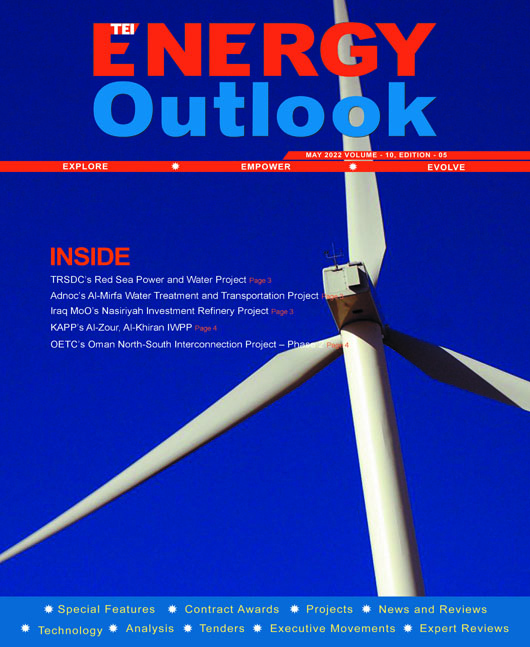
Wind Power Generation in MENA
With an increasing degree of diversity in the renewable energy development, experts see wind power as a potentially substantial resource in the Middle East and North Africa (MENA) region, which has some of the best areas with high wind speeds and consistent availability.
The worldwide wind power market is forecast to grow from around 730 GW in 2022 to 1,200 GW by 2025 with a $17.8bn market value, according to the Global Wind Report by the Global Wind Energy Council (GWEC).
The Middle East and Africa (MEA) region is expected to add 17 GW of new wind power capacity in the next five years, according to a new report by GWEC. It would be led by South Africa (5.3 GW), Egypt (3.6 GW), Saudi Arabia (2.4 GW), and Morocco (2.2 GW).
Dumat Al Jandal is the largest wind farm in the Middle East and the first in the Kingdom of Saudi Arabia. The project is a joint venture between Saudi Arabia’s ACWA Power, the UAE’s Masdar and France’s EDF. The 400 MW utility-scale wind power project has begun generating electricity. The project’s tariff, under $0.02/kWh, shows the strong potential of wind power in the region. Once fully operational, the wind facility will generate enough green energy to power up to 70,000 Saudi households while offsetting 988,000 tonnes of carbon emissions a year.
Saudi Arabia also has plans to build another 500 MW floating offshore wind farm in the Gulf, a collaboration between Italy’s Saipem and the UAE’s Plambeck, expected to complete in 2027.
Egypt is on course to rejuvenate wind power development with a number of gigawatt-scale projects announcements been made by the government.
The 10 GW onshore wind farms planned by Masdar is one of the world's largest onshore wind projects in Egypt. It would produce 47,790 GWh of clean energy annually and offset 23.8 million tonnes of carbon emissions, equivalent to around 9% of Egypt's current CO2 emissions.
When completed, the wind farm would be part of Egypt's Green Corridor initiative, a grid dedicated to renewable energy projects that is aimed at ensuring renewable energy makes up 42% of the country's energy mix by 2035.
Oman also has the great potential for wind power, with strong wind flows along its long coastline, which stretch to more than 2,000km. The Sultanate has a 50 MW wind farm in the Dhofar Governorate, built by Masdar. The government has plans to build more wind farms across the country with a combined capacity of 560 MW.
Looking ahead the prospects are bright to harness wind energy with a huge scope of growth in almost all the MENA countries.
Editor